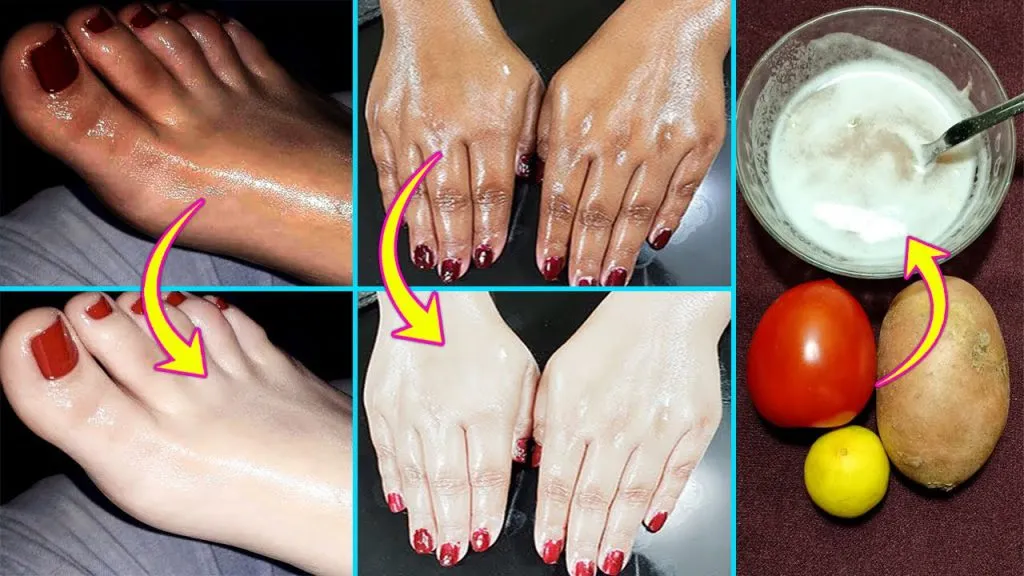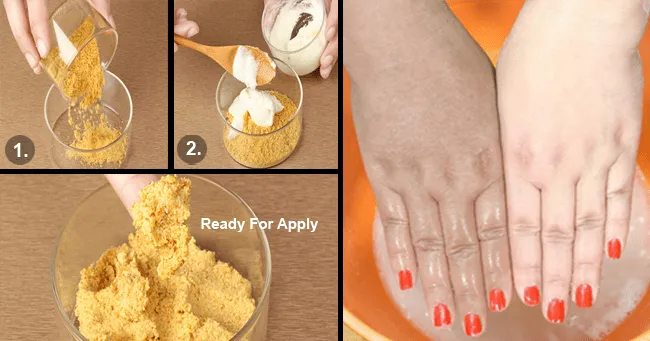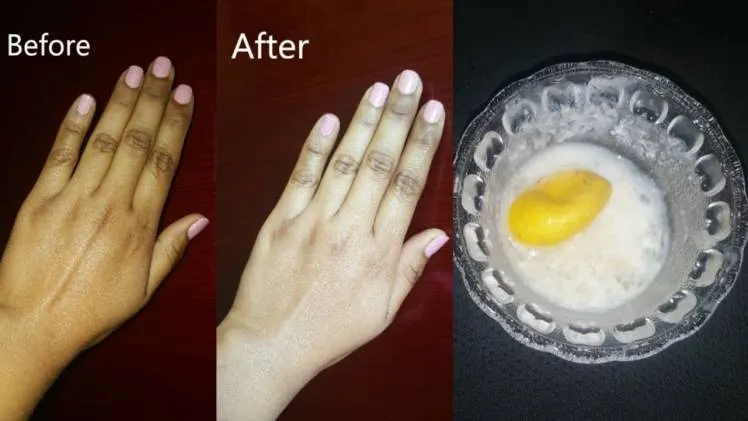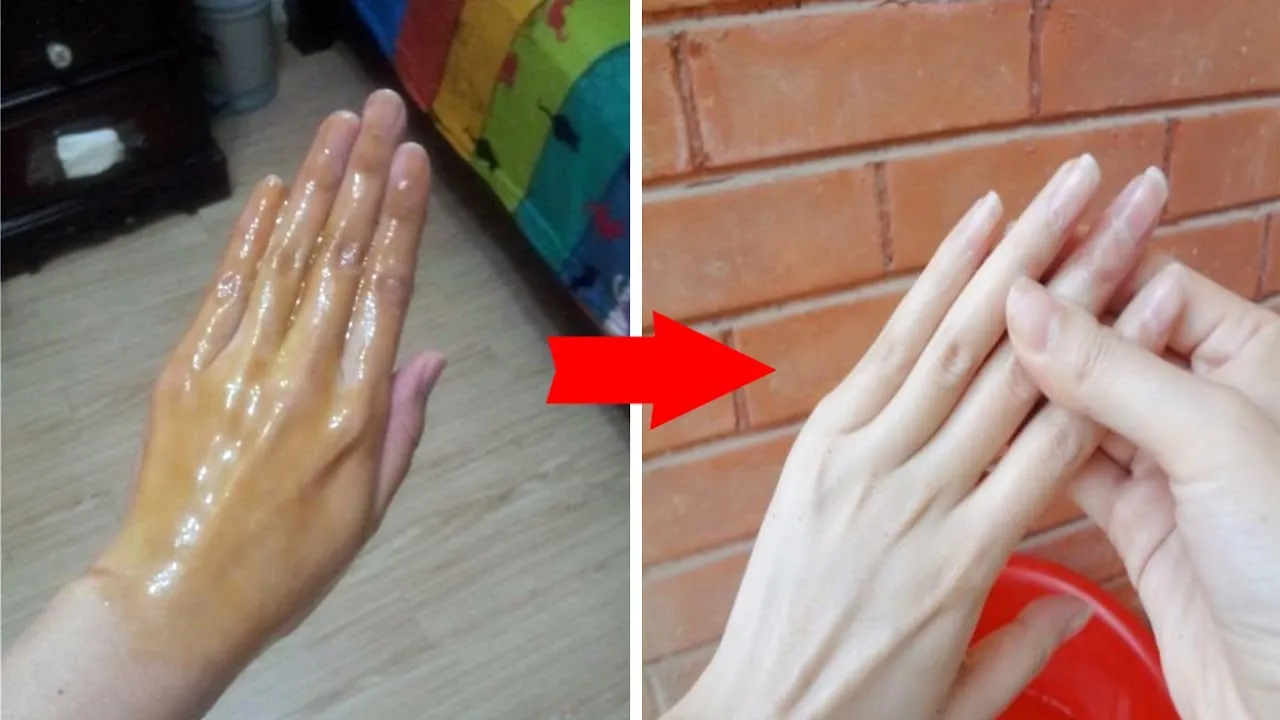Understanding Hand Discoloration
Hand discoloration, often manifesting as uneven skin tone, dark spots, or overall darkening, is a common concern for many. This change in pigmentation can be caused by a variety of factors, ranging from environmental influences to intrinsic biological processes. Understanding the root causes of hand discoloration is the first step towards developing effective strategies for whitening hands naturally and restoring a more even skin tone. Recognizing the underlying mechanisms helps in selecting the most appropriate and targeted treatments, ensuring both safety and efficacy. It’s important to approach this with patience and consistency, as natural methods often take time to show results, but are generally gentler on the skin.
Common Causes of Hand Hyperpigmentation
Hyperpigmentation, the darkening of skin, on hands is primarily caused by an overproduction of melanin, the pigment responsible for skin color. Several factors contribute to this, making it important to identify the specific triggers. One of the most prevalent causes is sun exposure, where ultraviolet (UV) radiation stimulates melanin production as a defense mechanism. Age spots, or solar lentigines, are another common form of hyperpigmentation, resulting from cumulative sun damage over time. Hormonal changes, particularly during pregnancy or with certain medications, can also trigger increased melanin production. Additionally, skin injuries, inflammation, and certain skin conditions can lead to post-inflammatory hyperpigmentation (PIH), where dark spots appear after the skin heals. The type and degree of hyperpigmentation can vary, thus understanding the cause is crucial for effective treatment.
Sun Exposure and its Effects

Sun exposure is a primary driver of hyperpigmentation, including discoloration of hands. The skin’s reaction to UV radiation is to produce more melanin, which acts as a natural sunscreen. However, overexposure can lead to an excessive accumulation of melanin, resulting in dark spots, uneven skin tone, and premature aging. The hands, often exposed to sunlight, are particularly vulnerable. The effects of sun exposure accumulate over time, contributing significantly to the formation of age spots and worsening existing hyperpigmentation. Regular and prolonged exposure to the sun’s rays, without adequate protection, accelerates the aging process and increases the risk of developing various skin conditions. Protecting your hands from the sun is crucial for maintaining a youthful and even skin tone.
Age Spots and Their Formation
Age spots, also known as solar lentigines, are a common sign of skin aging, particularly on sun-exposed areas like the hands. These spots are small, flat, darkened patches on the skin that typically appear with increasing age. They result from long-term exposure to ultraviolet (UV) radiation, which causes an overproduction of melanin in certain areas. While age spots are generally harmless, they can be a cosmetic concern. The formation of age spots is a gradual process, often starting with minor discoloration and gradually becoming more pronounced over time. They are more common in individuals with fair skin and those who have spent significant time in the sun without adequate protection. Prevention and treatment strategies are important in managing and minimizing the appearance of age spots.
How to Prevent Hand Discoloration
Preventing hand discoloration is a proactive approach to maintaining healthy and even-toned skin. The most effective strategies revolve around minimizing exposure to the primary causes of hyperpigmentation and reinforcing the skin’s natural defenses. Regular application of sunscreen with a high SPF is paramount, especially during outdoor activities and in sunny conditions. Wearing protective clothing, such as gloves with UV protection, can further shield the hands from harmful UV rays. Consistent and diligent care is the cornerstone of preventing hand discoloration, ensuring the skin remains youthful and radiant. It is essential to make these practices a consistent part of your daily routine.
The Power of Sunscreen Application

Sunscreen is a cornerstone of any preventative strategy against hand discoloration. Applying a broad-spectrum sunscreen with an SPF of 30 or higher daily is essential, regardless of the weather. Sunscreen blocks or absorbs UV radiation, preventing it from stimulating melanin production, which leads to dark spots and uneven skin tone. The hands are often exposed to sunlight, making them particularly vulnerable to sun damage, so reapplication every two hours, or more frequently if washing hands or sweating, is crucial. Choosing a sunscreen that is water-resistant ensures continued protection, even in wet conditions. Consistent and proper sunscreen use is a powerful tool in preserving the skin’s natural brightness and preventing premature aging of the hands.
Protective Clothing and Accessories
In addition to sunscreen, protective clothing and accessories offer a valuable layer of defense against sun-induced hand discoloration. Wearing gloves, especially those with UV protection, significantly reduces the amount of sun exposure to the hands. These gloves are designed with special fabrics that block harmful UV rays, making them ideal for outdoor activities, gardening, or driving. Hats with wide brims and long sleeves can also contribute to overall sun protection, preventing indirect exposure to the hands. The combination of sunscreen and protective clothing provides comprehensive protection, minimizing sun damage and maintaining a more even skin tone. It’s a proactive approach that enhances the efficacy of your skincare routine.
Top 5 Secret Techniques to Whiten Hands Naturally
Achieving lighter hands naturally involves using ingredients and methods that gently reduce melanin production and promote skin cell turnover. Several natural techniques have proven effective in brightening the skin tone on the hands. These methods harness the power of natural ingredients and require consistent application for optimal results. The goal is to minimize hyperpigmentation while nourishing and hydrating the skin, leading to a more radiant and even complexion. Here are five secret techniques you can incorporate into your routine for visibly lighter hands.
Lemon Juice and its Whitening Properties

Lemon juice is a widely recognized natural remedy for skin lightening due to its high citric acid content, a natural bleaching agent. Citric acid helps to exfoliate the skin, removing dead cells and promoting cell turnover, which can reduce the appearance of dark spots and uneven skin tone. Lemon juice also contains antioxidants that protect the skin from damage and brighten the complexion. For hand whitening, lemon juice can be applied directly to the hands, either neat or diluted with water, using a cotton pad. This technique should be practiced cautiously, as excessive or undiluted use can cause irritation and sensitivity to sunlight. Using lemon juice in moderation and in combination with moisturizing ingredients is recommended.
Using Lemon Juice Safely
While lemon juice can be an effective skin-lightening agent, it’s important to use it safely to avoid potential side effects. Always dilute lemon juice with water or another hydrating ingredient to reduce the risk of skin irritation. Perform a patch test on a small area of skin before applying it to your entire hands to check for allergic reactions or sensitivity. Limit the application time to a few minutes, and rinse thoroughly with water. After use, apply a moisturizing lotion or cream to prevent dryness. It’s crucial to avoid sun exposure after applying lemon juice, as it can make the skin more susceptible to sun damage. Consistent, safe usage and a thorough understanding of your skin’s tolerance levels are essential when incorporating lemon juice into your hand-whitening routine.
The Benefits of Exfoliation
Exfoliation plays a key role in brightening and lightening the skin on the hands. The process involves removing dead skin cells from the surface, revealing the fresher, more radiant skin beneath. Regular exfoliation helps to even out skin tone, reduce the appearance of dark spots, and enhance the effectiveness of other whitening treatments. By removing the build-up of dead cells that can trap pigment, exfoliation helps to reduce the appearance of discoloration. Furthermore, exfoliation stimulates cell turnover, encouraging the growth of new skin cells and improving the overall texture and tone of the hands. Incorporating gentle exfoliation into your hand-care routine is an effective strategy for achieving lighter and smoother hands.
Gentle Exfoliation Techniques

Gentle exfoliation techniques are crucial for safely and effectively lightening the hands. Avoid harsh scrubs that can cause irritation and damage the skin. Instead, opt for gentle methods that remove dead skin cells without being overly abrasive. One effective technique is using a homemade scrub made from ingredients like sugar and olive oil, which provides gentle physical exfoliation while moisturizing the skin. Chemical exfoliants, such as those containing AHAs (alpha-hydroxy acids), can also be used. When exfoliating, use circular motions and avoid excessive pressure. Always follow up with a moisturizer to keep the skin hydrated and protected. Consistent but gentle exfoliation is a key component of a hand-whitening regimen.
Honey and its Moisturizing Effects
Honey is a natural humectant, meaning it attracts and retains moisture, which is essential for healthy, glowing skin. Its moisturizing properties can help to soften the skin, improve its texture, and reduce the appearance of dryness and fine lines. Honey also contains antioxidants that protect the skin from damage. In hand-whitening treatments, honey is often used in combination with other ingredients to enhance their effects and provide added hydration. Regular application of honey can improve the overall health of the hands. Incorporating honey into your hand-care routine can promote a brighter, more youthful appearance. A honey mask can leave the hands feeling smooth, supple, and revitalized.
The Role of Honey in Skin Brightening
While honey primarily functions as a moisturizer, it also contributes to skin brightening through several mechanisms. Honey’s antioxidant properties help to protect the skin from oxidative stress and damage that can lead to hyperpigmentation and uneven skin tone. By combating free radicals, honey helps to prevent further darkening and promotes a more even complexion. Additionally, honey can promote healing and skin regeneration, which can reduce the appearance of dark spots and scars. When combined with other skin-lightening ingredients, honey enhances the effectiveness of treatments while providing essential hydration and support. Using honey regularly can improve the texture and overall radiance of your hands.
Turmeric’s Anti-inflammatory Properties

Turmeric, a spice commonly used in cooking, possesses potent anti-inflammatory and antioxidant properties that can benefit the skin. The active compound in turmeric, curcumin, helps to reduce inflammation, which can contribute to hyperpigmentation and uneven skin tone. Its antioxidant effects protect the skin from damage. Applying turmeric to the hands can help to soothe irritation, promote healing, and reduce the appearance of dark spots. The anti-inflammatory nature of turmeric can also improve the overall skin tone, leaving the hands looking brighter and healthier. Using turmeric in hand whitening involves creating a paste or mask and applying it to the skin regularly. The combined benefits of turmeric’s anti-inflammatory and antioxidant properties make it a valuable ingredient for promoting skin health and a more even complexion.
Creating a Turmeric Paste
Creating a turmeric paste is a simple process that allows for direct application to the hands. To make the paste, mix turmeric powder with a liquid base, such as water, milk, or yogurt, until a smooth consistency is achieved. The choice of base can depend on personal preference and skin type. For example, yogurt provides additional moisturizing benefits, while milk can help soothe the skin. Apply the paste evenly to the hands, ensuring full coverage. Allow the paste to sit for a set amount of time, typically 15-20 minutes, to allow its beneficial properties to be absorbed. Rinse off thoroughly with water and gently pat the hands dry. Regular use of the turmeric paste can help to reduce inflammation and improve the skin’s overall appearance.
Potato Juice for Skin Lightening
Potato juice is a natural skin-lightening agent that is often used to reduce dark spots and uneven skin tone. Potatoes contain enzymes and vitamins that help to lighten the skin and reduce hyperpigmentation. The use of potato juice is a gentle and effective method for improving the appearance of the hands. Potato juice is a good choice for those looking for a natural approach to skin brightening. The process requires a simple preparation of potato juice and consistent application. Results may vary, but regular use can often lead to visibly lighter skin.
Potato Juice Application

Applying potato juice to the hands is a straightforward process. First, you’ll need to prepare the juice by grating a raw potato and squeezing out the liquid, or using a juicer. The resulting juice can be applied directly to the hands using a cotton pad, ensuring even coverage of the skin. Allow the juice to sit on your hands for 15-20 minutes, allowing the beneficial enzymes and vitamins to penetrate the skin. Rinse off thoroughly with water and gently pat your hands dry. For best results, apply a moisturizing lotion or cream after rinsing to keep the skin hydrated. Repeat this process regularly, typically several times a week, for noticeable improvements in skin tone. Consistent use is key to achieving the desired effects.
Incorporating Hand Whitening into Your Routine
Integrating hand-whitening techniques into your daily routine requires consistency and the right approach. Establish a regular schedule that includes cleaning, moisturizing, and targeted treatments to address hand discoloration. Making hand care a priority ensures the best results and supports the overall health of your skin. A consistent routine also helps you to monitor the progress and make necessary adjustments. A holistic approach that considers multiple facets of hand care will provide optimal results and maintain a healthy, youthful appearance.
Choosing the Right Products
Choosing the right products is essential for an effective hand-whitening routine. Look for products that contain ingredients known for their skin-lightening properties, such as lemon extract, turmeric, honey or potato extract. Always select gentle, non-irritating formulas. When choosing a moisturizer, opt for products that include ingredients like hyaluronic acid or shea butter, known for their hydrating properties, keeping the hands soft and supple. Perform patch tests to ensure products are well tolerated. Always check the ingredient list and avoid products with harsh chemicals or fragrances that could irritate your skin. Selecting the right products supports the effectiveness of your routine and helps to maintain the health and vitality of your hands.
Lifestyle Changes for Healthier Hands
In addition to topical treatments, certain lifestyle changes can improve the overall health of your hands and contribute to a more even skin tone. Stay hydrated by drinking plenty of water, which helps maintain skin elasticity and reduces dryness. Protect your hands from harsh chemicals by wearing gloves when cleaning or doing dishes. A balanced diet rich in antioxidants and vitamins can support skin health from within. Also, avoid smoking, as it damages the skin and contributes to hyperpigmentation. Making these lifestyle changes complements your hand-whitening routine, ensuring your hands are healthy and radiant from the inside out. Regular exercise improves overall circulation, which helps to promote healthy skin.
Maintaining Hand Health
Maintaining hand health is a continuous process that requires consistent care. This includes regularly moisturizing the hands to keep them hydrated, applying sunscreen to protect against sun damage, and practicing gentle exfoliation to remove dead skin cells. Consistent care will prevent dryness, reduce the appearance of dark spots, and improve the overall skin texture. Regular moisturizing will keep your hands soft and supple. Consistent effort leads to long-term results and helps ensure that your hands remain healthy, smooth, and youthful-looking. Incorporating these practices into your daily routine will help you maintain the health and appearance of your hands over time.
Long-term Hand Care
Long-term hand care involves establishing habits that promote the health and appearance of your hands over time. Continue to protect your hands from the sun, wear gloves when dealing with chemicals, and stay vigilant about moisturizing. Regularly assess the condition of your skin and adjust your routine as needed. Periodic treatments and proactive measures are essential for maintaining healthy and youthful-looking hands. Long-term hand care is an investment that pays off in the form of healthy and radiant skin. Remember that results take time, so patience and consistency are key.
